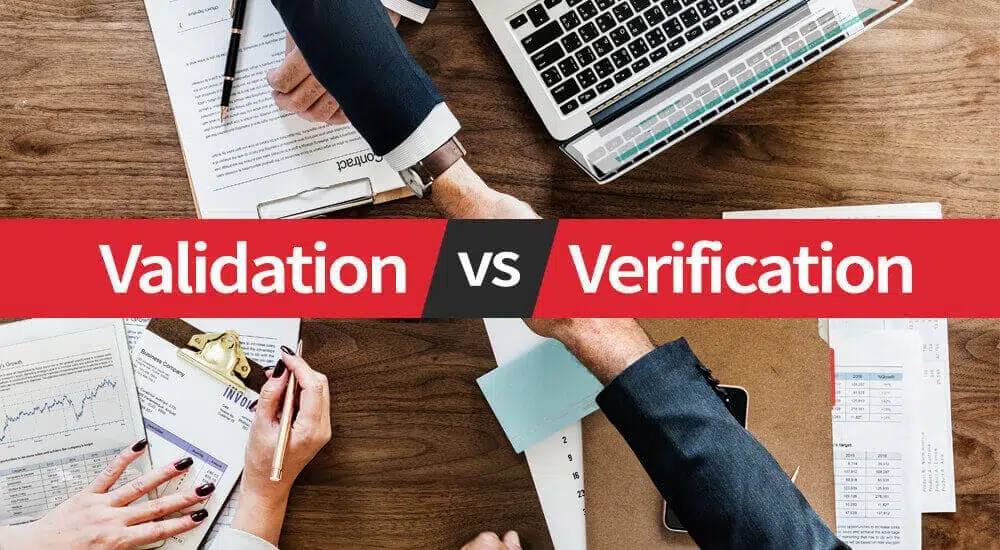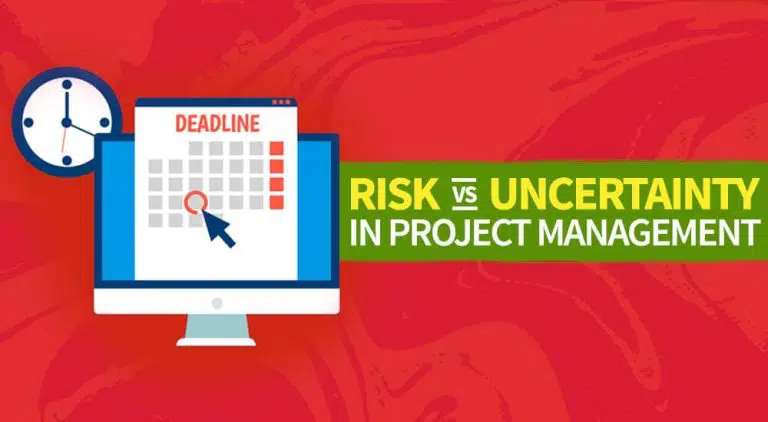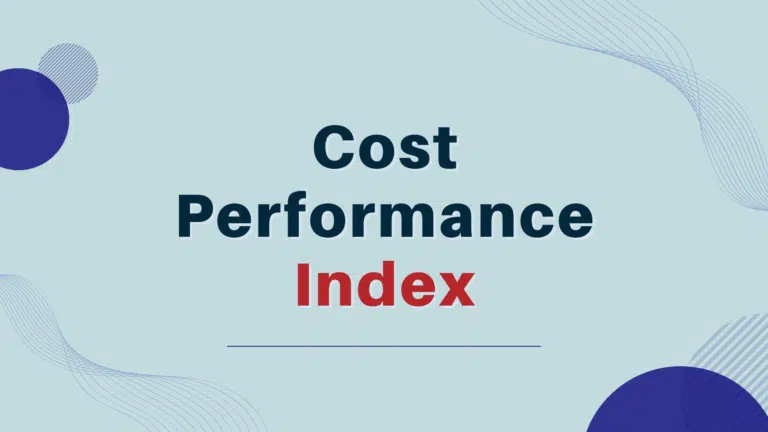Today, we will discuss verification vs validation.
Verification and validation are two important terms in project management. Because they seem very similar, it’s easy to get them confused.
These are important concepts, and any PMP aspirant needs to understand them well.
While this topic is not necessarily important from the PMP exam point of view, as a project manager, you must be able to distinguish between these terms.
Let’s get started.
Verification Vs Validation
We will start with verification.
Verification
Verification is about building the product correctly, ensuring it meets all stated quality requirements and is as described.
Verification is an objective process. All quality requirements must be well documented for proper measurement and analysis.
Example of Verification
Let’s say that you are developing a cell phone. You have conducted market research and collected all the information on the required features. You develop a plan to build the product, completing all the requirements and developing the product accordingly.
Now, the production process has started. You carry out an inspection to ensure that everything is going according to plan.
If the product meets requirements, this means it has been verified.
Verification ensures that the product is of high quality and error-free. This is a thoroughly objective process; however, this does not mean the product will meet customers’ requirements, which is where validation comes in.
Validation
Validation is about making sure you have developed the correct product and that it meets customers’ requirements.
Validation is a subjective process. It shows you how well the product has fulfilled the customer’s requirements. Modeling, simulation, and user evaluation are a few techniques that help the invalidation process.
Example of Validation
Let’s say you are developing a cell phone for your customers. You have conducted market research and determined what features the item should have. Then you started the production.
However, when the cell phone is finally launched, it does not get the expected market response. Eventually, it fails.
In this situation, you would say that the product could not be validated because it failed to meet the customers’ expectations. Validation is about product testing, and it is a fundamentally subjective process.
Difference Between Verification and Validation
Verification ensures that products meet the specifications, whereas validation ensures that those specifications meet customer requirements.
A few differences between verification and validation:
- Verification evaluates the process and the product in development, while validation evaluates the product itself.
- Verification helps the product be built the right way. The objective of validation is to build the right product.
- Inspection and document review are verification tools. Validation activities include testing the product.
- The project management team performs the verification process while the client or customer performs validation.
It is possible for the product to pass verification but fail validation.
In the example provided, you can see this; the company developed a cell phone that passed through the verification process. However, when they launched it, the customer response was not positive. The product failed, meaning it can’t be validated.
Summary
Verification and validation are independent procedures. The project manager uses these processes to ensure they have correctly built the right product. Verification is about conformance to specifications; it is an internal process. Validation is about customer expectation and is often an external, subjective process. Verification comes before validation.
I hope this discussion on verification vs validation has been helpful. Please share your experience with using these processes in the comments section.

I am Mohammad Fahad Usmani, B.E. PMP, PMI-RMP. I have been blogging on project management topics since 2011. To date, thousands of professionals have passed the PMP exam using my resources.








Validation is about products while verification is about the process. What do you think about my summary of this article?
In verification you check if the product is developed as designed and requested by stakeholders.
Good example with the cell phone. Take the Microsoft Office Phone for example.
The project could be successful in terms of building the phone, but customers did not like the phone and it was not supported; therefore, as a product, it failed.
So, the phone was build correctly; meaning the phone was verified. The phone was a commercial failure, therefore it was not validated.
The subcontractor who built the phone had a successful project. The customer who had a failed product also had a successful product creation project, but a failed product lifecycle experience.
The point of confusion could be: don’t confuse the product lifecycle failure with the project success.
Do I have this correct?
Well said David.
Terms to be truly useful need to be have singular understanding when used. For validation and verification we have run into issues with interpretation by individuals familiar with systems engineering, but as much with people not familiar w/SE since they typically don’t have a clue.
At times we overthink a definition to the point the definition becomes confusing to the majority of individuals that hear the term. A good example is ‘Risk’. A layman using English langue hears the term ‘Risk’ and thinks something bad can happen. Someone following PMI terminology hears the term ‘Risk’ and ‘may’ think ‘threats & opportunities’.
So, with V&V terms, some additional work is needed to either make them very clear and distinguishable, or use terms no one knows and define them.
Well said Bill.
Verification
Verification is about building the thing in right way. <— huh? Building the thing in right way is not grammatically correct.
Corrected.
Can you tell me the difference between Subjective Process and Objective Process
In objective process you have measurable criteria, and in subjective process they are open to discussion and depends on the party.
And also how configuration mgmt. differs from project scope mgmt. as both addresses the actual result, product or service of the project.
Hi Fahad, ( I hope you do not get bored with so many questions) How change management differs from the perform integrated change control?
Thank you again
Hi Fahad, continued form the previous question from me on validated changes question, in 4.4.1.1 on page on.90 it says ” approved changes that results from the Perf. Inte. Change Control process require validation to ensure that the change was appropriately implemented. A validated change provides the necessary data to confirm that the change was appropriately executed.” To me it seems that an approved change request gets implemented through Direct & Manage project work & through Control quality deliverables ( which is the resultant of either first time work or approved change request work) gets validated & also the control quality validates that the approved change to the original plan worked well, delivered the validated result & hence should update proj. mgmt. plan & proje docu & should be archived as best practice for future references. Did I understand the cycle correctly? Pl. share your though.
Hi Fahad, could you pl. shed more light on Validated changes which is an O/P from Control Quality process & I/P to M & C Process. As per PMBOK page 262 it says that ” any changed or repaired items are inspected & will be either accepted or rejected before notification of the decision is provided. Rejected item may require rework.” By the definition it should go to validate scope (same as verified deliverables) unless if the only difference between verified deliverable & verified changes is the former deals with the result of the project & later deals with processes?? But once again the doubt is the definition itself which as above says that ” any changed or repaired items are inspected’.
Kindly share your thoughts at the earliest.
Hi Fahad,
You have not replied to this important question. I too have questions regarding Validated Changes. Your thoughts and explanations would be much appreciated.
Anil
I did not understand the above question. What is your doubt?
Thanks for this explanation. Quick questions:
1. Verification – control quality?
2. Validation – Scope management?
3. Is verification performed before validation or concurrently with validation?
1) Verification include quality control and quality assurance.
2) Validation include scope management plus quality assurance and control.
3) You can say, these are compliment to each other.